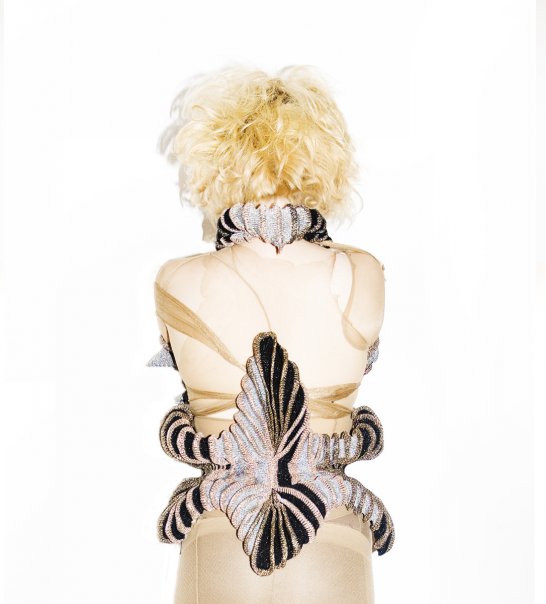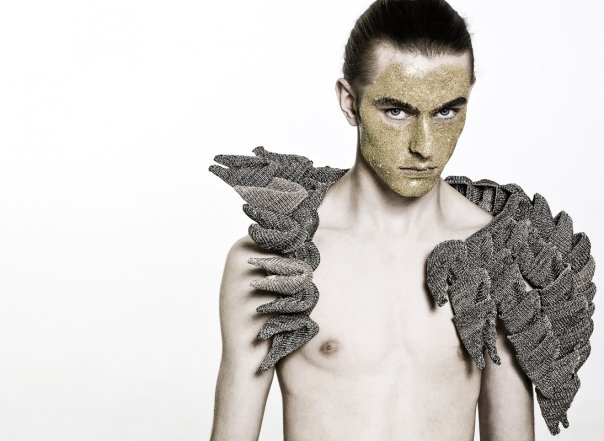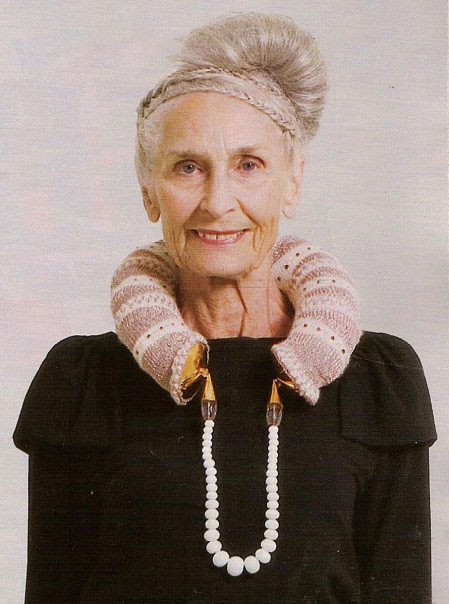Richard Price interviews knitwear designer Liria Pristine




RP: Where did you study, and why did you choose to study there?
LP: I studied at Central Saint Martins. I wanted to study in London and heard the name of the college in the Pulp song, Common People! Then I met a boy who studied textile design there, started to look into it and then realised its prestige.
RP: What made you decide to work in knitwear?
LP: I was actually applying to Art Colleges to study Costume. I hadn’t made it to its Open Day, and assumed CSM’s Theatre course had a Costume specialisation. It did, but only in final year so I asked them to consider me for the Fashion course, and they told me I definitely belonged to Knitwear. The thing that attracts me to Costume and Fashion usually has something to do with the textile, the colour, the material, the contrast, or texture. I also received an acceptance for Costume at LCF, [London College of Fashion] but got completely absorbed with knitwear from that day on since it gave me hands on control of my fabrics.
RP: What’s your favourite piece you’ve made? And what inspired it?
LP: My Sea Lady Piece. It was made for an installation for the windows of Hoxton Boutique. It was inspired by Ray Caesar, his work is both breathtaking and mesmerising.
RP: Do you think it is important to preserve knitwear as a craft for future generations?
LP: Definitely. I think all crafts should be preserved, so many different cultures look at crafts in so many various ways. Craft goes together with Art, we need both.
RP: If you didn’t do knitwear, what other part of fashion would you work in Or what other career or calling?
LP: I suppose I would have been working with Costume.
RP: How much of your own feelings and personality do you feel come into your work?
LP: 100% – it wouldn’t be my work if it was any less.
RP: When you design your work do you think about how knitwear limits it? Or do you design first then find ways to use knitwear in a new way to achieve your aims?
LP: Samples first, always – the textile is very important to me.
RP: Is there any particular artist, designer, or actor that you identify with in terms of your work?
LP: These days it’s been OsGemeos, the graffiti twins; their use of colour, textile, pattern is just amazing, they should design a collection!
RP: What does fashion mean to you?
LP: Art.
RP: Does this come across in your work, if so how?
LP: Yes, my work tends not to be very wearable!
RP: What methods of knitwear do you use, are you largely a hand knitter? Or a machine knitter? Why do you use the techniques you do?
LP: Machine, domestic Brother. I usually let the yarn dictate what technique I’m going to use. It all develops very organically from the yarn, its properties, which mix the best, etc etc.
RP: Which is better, knit, crochet, or machine knit?
LP: Oh, they all have their reasons to be better than the other. Visually I love crochet, but I machine knit, and I wear hand knit!
RP: Which of these best describes your work: fashion, art, craft, philosophy, performance (you can choose more than one).
LP: Art, craft, performance.
RP: Do you think that the contemporary knitwear designers working today are pushing the discipline, or do you think that more could, or should be done?
LP: I think they are doing just fine pushing knitwear into new ways and forms. More will be done in the future, but right now there are some good people working with knit.

